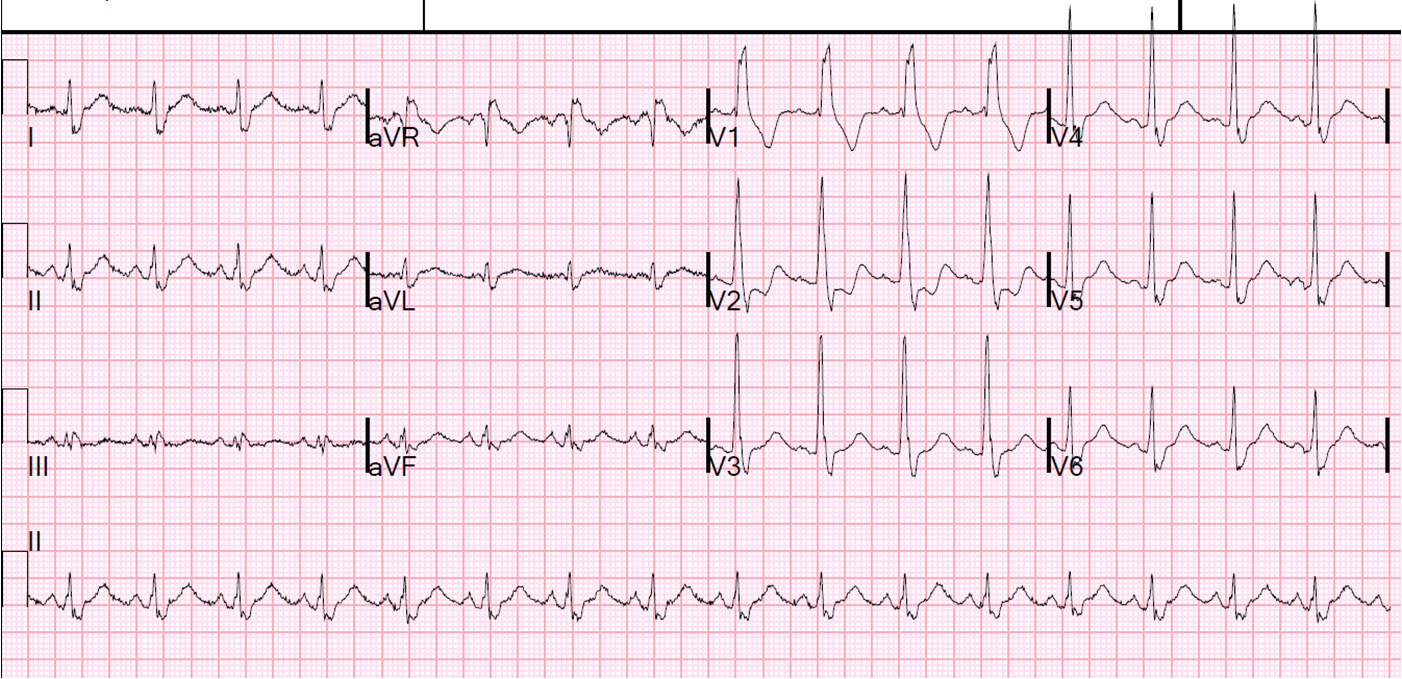A middle-age alcoholic presents with weakness and vague abdomimal discomfort. The patient’s previous ECG was from 4 years prior and was completely normal. Here is the presenting ECG:
Answer:
Here I have annotated the ECG:
If the U-wave were really a T-wave, then the QT would be 440ms and the QTc would be 568 ms, which is very long. Whenever the QT interval seems too long, suspect a U-wave.
The patient had no myocardial ischemia. The potassium returned at 2.2 mEq/L.
Diagnosis: U-wave from hypokalemia, in the presence of right bundle branch block.





interesting.
i wonder if there's even more at play; eg, low mag, thiamine deficiency, other.
but the point is : U waves, think low K. thank you , steve
does a low K contribute to the RBB?